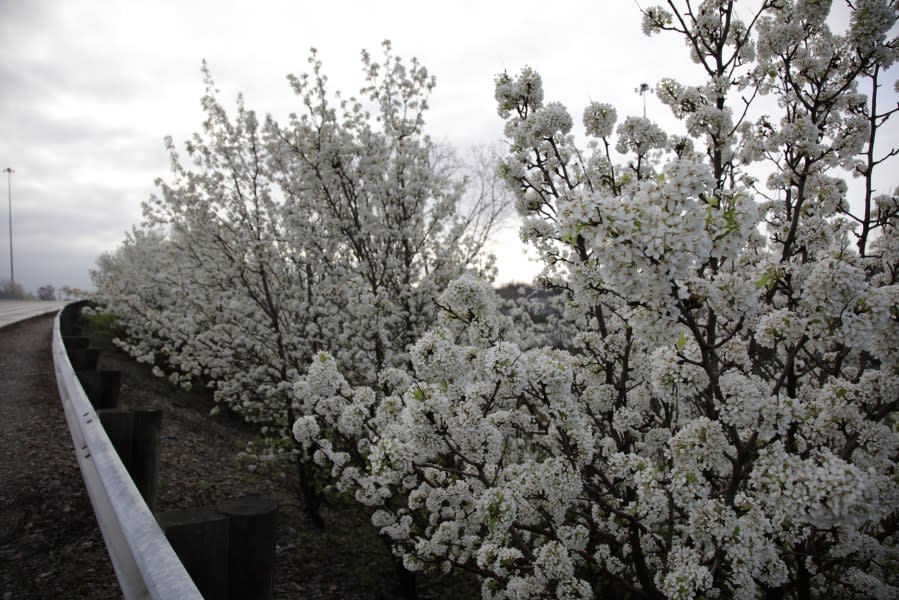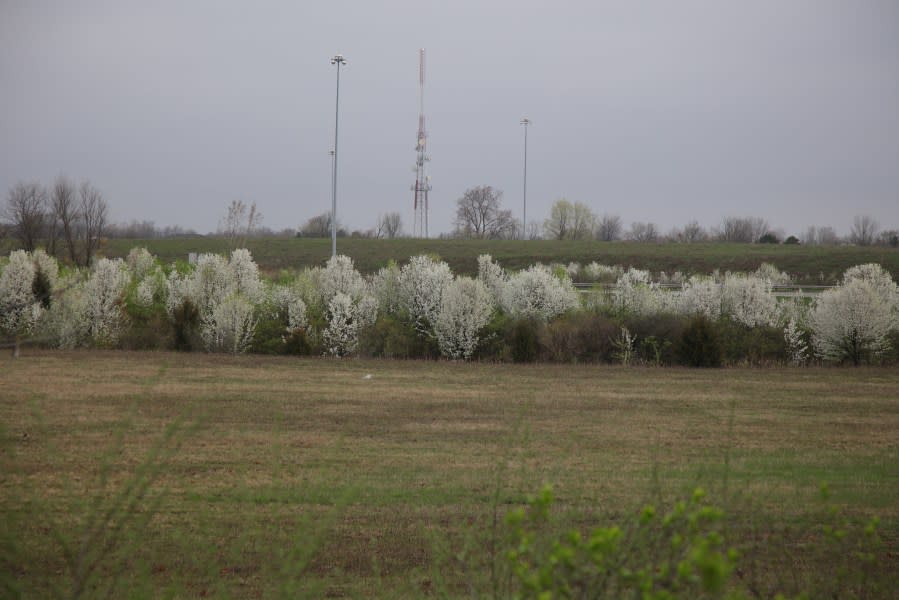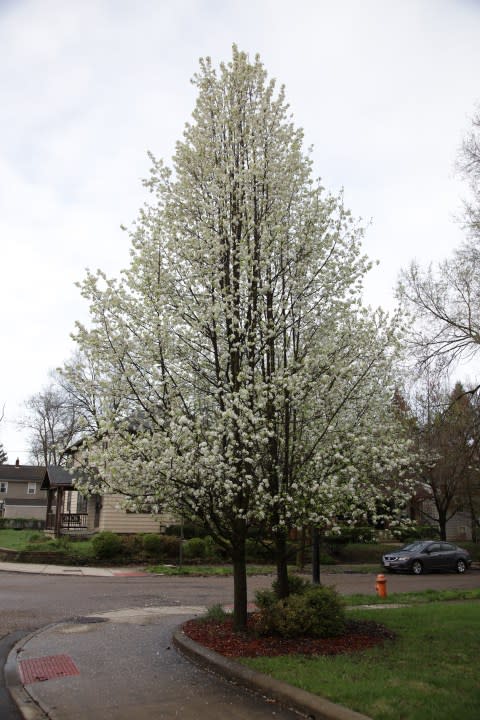What’s that smell? Invasive pear trees begin blooming in central Ohio

COLUMBUS, Ohio (WCMH) – As warm weather returns to Ohio, so does a distinctive springtime odor that many liken to rotting fish or puke. The overwhelming aroma is the result of an invasive species which is illegal to plant in the state.
The Callery pear tree, which comes in multiple varieties, including “Bradford” pear, “Autumn Blaze” and “Cleveland Select,” is native to Asia and is now considered an invasive plant. The tree, primarily grown for its appearance, was introduced to North America in the 1900s for agricultural use.
Comedy show added to 2024 Ohio State Fair concert list
Characterized by its white flowers, the tree quickly became popular in landscaping due to its adaptability, color and shape, according to the Ohio Department of Natural Resources. But the tree has become well-known for another one of its qualities – its odor. The tree’s blooms typically have a strong aroma, which can be likened to rotting fish.
(Photo Courtesy/Ohio Department of Natural Resources) (Photo Courtesy/Ohio Department of Natural Resources) (Photo Courtesy/Ohio Department of Natural Resources)
As of Jan. 1, 2023, the tree is illegal to sell, grow or plant in Ohio due to its invasiveness. This means nurseries and garden centers are not allowed to sell the trees and homeowners and landscapers cannot purchase or install them.
Ohio is not the only state to ban the Callery pear tree; Pennsylvania and South Carolina have enacted similar bans. The tree poses a “major threat” to native grasslands and wildlife, according to the Minnesota Department of Agriculture. It can rapidly fill in gaps in open spaces, which leads to the trees crowding out native plants and disrupting ecosystems.
The tree was bred to be sterile and was originally believed to be unable to reproduce, however different varieties of the tree have cross-pollinated with each other, leading to the spread of fruit-bearing trees.
Affordable housing development to be built near Columbus State
Tiny hard brown pears appear on Callery pear trees in the fall. After they are softened by frost, they can attract problematic bird species who like to eat the fruit, according to the Minnesota Department of Agriculture. The tree’s messy fruit and weak branches are also among its undesirable qualities.
Ohioans who have a Callery pear tree in their yard are not required to remove it, but removal is encouraged by the Department of Natural Resources. The agency recommends serviceberry trees, eastern redbuds, American plums and flowering dogwoods as potential alternatives.
For the latest news, weather, sports, and streaming video, head to NBC4 WCMH-TV.




